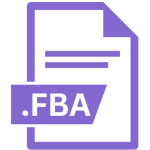.ESH File Extension

Extended Shell Batch File
| Developer | Update Soon |
| Popularity | |
| Category | Executable Files |
| Format | .ESH |
| Cross Platform | Update Soon |
What is an ESH file?
The .ESH file extension stands for Extended Shell Batch file. This file type is used to store scripts written for shell environments, which are command-line interfaces used for various operating systems.
Extended Shell Batch files are designed to be more versatile and powerful than traditional batch files, offering additional functionality and enhanced control over system operations.
They typically contain a series of commands that can automate tasks, configure system settings, or manage processes, making them invaluable for system administrators, developers, and advanced users.
More Information.
The history of the .ESH file format is closely tied to the evolution of shell scripting and command-line interfaces.
Initially, batch files were limited to executing simple commands and managing basic system functions. As technology advanced, the need for more complex scripting capabilities became apparent.
This led to the development of more advanced scripting languages and file formats, including the .ESH file extension.
The primary purpose of .ESH files is to provide a more robust scripting environment compared to traditional batch files. They are designed to handle more complex operations, including conditional statements, loops, and error handling.
This makes them suitable for tasks such as automated system maintenance, software deployment, and process management.
Origin Of This File.
The .ESH file format is an extension of the traditional .BAT (batch) file format used in Windows operating systems.
While .BAT files have been around since the early days of DOS, the .ESH file format emerged as a more advanced scripting option designed to provide extended features and capabilities.
The shift to using .ESH files was driven by the need for more sophisticated scripting solutions that could handle complex tasks and integrate with modern shell environments.
The .ESH format is especially prevalent in systems that require enhanced automation and system management functionalities.
File Structure Technical Specification.
An .ESH file typically contains a series of commands and instructions written in a shell scripting language.
The structure of an .ESH file is similar to that of other scripting files but with added features. Key components of an .ESH file include:
- Shebang Line: This line at the beginning of the file specifies the path to the shell interpreter that should execute the script. For example,
#!/bin/bashfor Bash scripts. - Comments: Comments are included to provide explanations or notes within the script. They are usually denoted by the
#symbol. - Commands: These are the core instructions of the script. They can include system commands, file operations, and calls to other scripts or programs.
- Variables: .ESH files can define and use variables to store and manipulate data.
- Conditional Statements: These allow the script to make decisions based on certain conditions. Common conditional statements include
if,else, andelif. - Loops: Loops such as
for,while, anduntilenable repetitive execution of commands. - Functions: Functions can be defined to encapsulate reusable code blocks, making scripts more modular and easier to manage.
Technical specifications for .ESH files can vary depending on the shell environment in which they are used. However, they generally follow the syntax and conventions of shell scripting languages like Bash or PowerShell.
How to Convert the File?
Converting an .ESH file to other formats typically involves transforming the script into a different scripting language or file type. Common conversions might include:
- .BAT Files: Converting an .ESH script to a .BAT file involves translating shell commands into the syntax used by Windows batch files. This may require modifications to account for differences in command syntax and functionality.
- .PS1 Files: For environments using PowerShell, converting an .ESH file to a .PS1 (PowerShell script) may be appropriate. This conversion involves rewriting the script using PowerShell syntax and commands.
- Python Scripts: Some users may choose to convert .ESH files to Python scripts (.py) for enhanced functionality or cross-platform compatibility. This conversion requires translating shell commands into Python code.
Advantages And Disadvantages.
Advantages:
- Enhanced Functionality: .ESH files offer advanced scripting capabilities beyond traditional batch files, including complex logic, error handling, and modular code.
- Flexibility: They can be used in various shell environments and can interact with a wide range of system components and applications.
- Automation: .ESH files are excellent for automating repetitive tasks, system maintenance, and process management, saving time and reducing human error.
- Portability: As long as the target system supports the relevant shell environment, .ESH files can be easily transferred and executed across different systems.
Disadvantages:
- Complexity: The added functionality can make .ESH files more complex to write and debug compared to simpler batch files.
- Compatibility: Not all systems may support .ESH files or the specific shell environment required for execution, leading to potential compatibility issues.
- Security Risks: As with any script, .ESH files can pose security risks if they contain malicious code. Proper safeguards and validation are essential.
- Learning Curve: Users unfamiliar with shell scripting may face a steep learning curve when working with .ESH files, requiring time and effort to master the scripting language and best practices.
How to Open ESH?
Open In Windows
- .ESH files are not natively supported in Windows. However, they can be executed using a compatible shell environment like Git Bash or Windows Subsystem for Linux (WSL). To open, install the necessary shell environment and run the script using the appropriate interpreter.
Open In Linux
- On Linux systems, .ESH files can be executed directly from the terminal if they have the correct shebang line and execute permissions. Use the
chmod +x filename.eshcommand to make the file executable and then run it using./filename.esh.
Open In MAC
- Similar to Linux, .ESH files can be executed on macOS using the terminal. Ensure the file has execute permissions and use the terminal to run the script with the appropriate shell interpreter.













